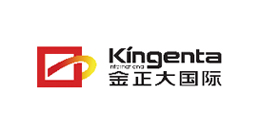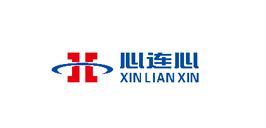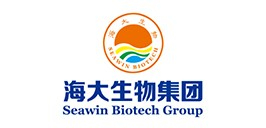With the implementation of government initiatives to achieve food security and promote downstream agribusiness opportunities having placed a renewed onus on the increased production of key commodities; Indonesia’s fertiliser manufacturing industry has experienced steady growth, with a compound annual growth rate above 4% between 2006 and 2010. Such is the demand for proven methods of advancing plantation yields that an industry once entirely dominated by state owned enterprises is now becoming a prime investment area for businesses striving to serve a domestic market that imported $2.62 billion USD in fertiliser in 2012. More so than ever before, lucrative opportunities in fertiliser production await companies able to cater to the needs of rapidly expanding plantation businesses – such as those in a domestic palm oil industry planning to allocate a further 4 million ha to the production of palm oil for bio fuel by 2015 (Greenpeace) - now more conscious of the need to raise lacklustre commodity yields (See An Overview of Indonesia’s Palm Oil Industry and Overview of the Rubber Sector).
Intervention Issues
Through subsidies granted to five SOEs - Petrokimia Gresik, Pupuk Kujang, Pupuk Kalimantan Timur, Pupuk Iskandar Muda and Pupuk Sriwidjaja Palembang – which now operate under strategic holding company Pupuk Indonesia; government involvement has been a constant feature of the fertiliser industry since 1971. The present form of said subsidy is laid out in Ministry of Trade Regulation No. 15/2013, which states that the aforementioned SOEs are required to sell certain types of fertilisers at a capped price determined by the government and in return receive input subsidies. Crucially, subsidised fertiliser is supposed to be limited for purchase by smallholder farmers with plantations under 2 ha, which should leave plenty of room for private sector firms to cater to larger plantation businesses.
In reality, however, leakages and an inadequate monitoring system has led to subsidised fertiliser making its way into the hands of non-smallholders. With cheaper than market price fertiliser readily available (particularly those of the ammonia based urea variety) businesses have in the past thus steered clear of unsubsidised private sector products in favour of those manufactured by SOEs even if not entitled to them, thus dampening the potential of the fertiliser industry to private investors.
Green Shoots in the Private Sector
The pressing need to boost agricultural yields, however, has changed the industry landscape and opened the door to other companies. Having enjoyed a monopoly over the production of fertilisers, SOEs chose to focus on the manufacturing of fertilisers made from inputs accessible in Indonesia, such as ammonia derived from natural gas, to produce urea fertiliser in huge quantities. Despite the fact that the product’s benefits are limited relative to fertilisers with multiple nutrients (mixed compound), government backed companies continue to produce over twice as much of this single compound fertiliser than any other type.
This has resulted in a gap in the market, whereby productivity driven plantation owners and farmers have sought to implement mixed compound fertilisers such as NPK but find that the domestic supply of this product in both subsidised and unsubsidised form is limited. While 2012 demand for NPK easily cleared 5 million tonnes, only 2.89 million tonnes were produced by state owned enterprises (APPI). Conversely, such was the saturation of the urea fertiliser market that over 1.09 million tonnes were exported in 2012 in spite of regulations that require SOEs to satisfy domestic demand prior to carrying out any exports.

Having only established a foothold in the industry in the 1990s, the private sector is thus being presented with a considerable opportunity to supply a domestic market presently forced to import a large portion of its mixed compound fertilisers. The twin momentum encouraging agribusiness activity (See Overlooked Opportunities in Indonesia’s Agribusiness Industry) and guaranteeing food security has only made this trend towards NPK fertilisers more pronounced, with the International Fertiliser Association (IFA) having asserted that Indonesia should comfortably develop into the biggest market for NPKs in South East Asia based upon the expansion of its palm oil industry alone. With demand for this product projected to grow by 10% by 2015 (APPI), now is a strategic time to enter Indonesia’s fertiliser manufacturing industry.
Opportunities Abound
The growing preference for fertilisers that provide nutrients such as nitrogen, phosphorous and calcium in one easily undertaken treatment bodes well for foreign investors in more ways than one. First, there exists considerable scope for international companies to fill the gap in domestic production of mixed compound fertilisers and set up operations in Indonesia. Leading agribusiness corporation, Wilmar Group through their subsidiary Sentana Adidaya Pratama are among the most notable to have already entered the market; having opened a 120,000 t/y granulated compound fertiliser plant in Dumai, Sumatra as well as a 330,000 t/y ammonium phosphate plant in the same region to lessen the need for imported inputs. Conscious of their own country’s experience with the rise of palm oil plantations leading to the large scale use of compound fertilisers, Malaysian firms Agrifert-Kuoks and CCM are among the other companies to have set up fertiliser manufacturing facilities in Indonesia.
Foreign investors able to identify and secure a long term supply of a handful of raw materials not easily found in Indonesia such as phosphoric rock and potash are especially encouraged to take advantage of this opportunity.
Other opportunities are available to foreign investors in the form of partnerships with SOEs now moving to catch up with rampant demand from the local agribusiness industry. A number of government backed companies have recently sought to boost NPK production capacity and require significant investment to carry out expansion plans. Pupuk Sriwidjaja Palembang plans to begin construction on a new NPK plant in 2014 and is in the process of finalising negotiations with bidders. Petrokimia Gresik earlier this year announced plans to develop three projects worth $1.06 billion USD, including a joint venture with Middle East based Jordan Phosphate Mines to construct a new acid phosphate mine scheduled to commence operations in the second quarter of 2014. The $200 million USD facility is expected to increase production of acid phosphate by 200,000 tonnes per year and will serve as a much needed domestic source of a key nutrient in compound fertilisers – as of 2013, approximately 30% of the acid phosphate supply in Indonesia was imported (International Food Policy Research Institute).
As part of the joint venture, Jordan Phosphate Mines will manage the long term supply of phosphoric rock needed to produce acid phosphate by importing 770,000 tonnes of the unprocessed rock from its mines in Jordan every year. This type of arrangement is very much representative of the type of collaboration likely to succeed in Indonesia and is demonstrative of the willingness of foreign firms to cater to a growing domestic market for fertiliser in spite of the need to import a selection of materials not yet available locally.
Foreign investors looking to take a more hands off approach will find that there are lucrative export opportunities available to them, particularly in the field of delivering key nutrients to domestic fertiliser manufacturers. Indonesia is currently unable to produce potash and has relied upon foreign sources to meet demand for the nutrient that has grown at the third fastest clip in all of Asia at 5% (2012, FAO). Openings thus exist to foreign companies based in the primary potash producing regions of the world such as Europe and Canada to distribute the fertiliser ingredient to a growing Indonesian market. In 2010, Canpotex, the world’s larger exporter of potash signed a five year agreement with Indonesia to supply the country with a total 3.75 million tonnes of the material and both Russia based Uralkali and Belarus based Belaruskali have voiced interest in entering the market.
Outlook
Long considered an industry made uncompetitive by decades of government intervention, Indonesia’s fertiliser manufacturing industry has the makings of a high growth industry conducive to the successful entry of foreign investors. The country’s concerted strides towards improving agricultural productivity have brought about a realisation that international private sector firms have a significant role to play in addressing a lack of domestically produced compound fertilisers. Whether through setting up a new manufacturing facility, partnering with SOEs to improve upon the availability of fertiliser inputs, or distributing nutrients and raw materials to domestic producers; foreign investors will not suffer for a lack of lucrative opportunities in Indonesia’s fertiliser industry – a fact many would have considered inconceivable in the not too recent past.
It is also worth noting that Indonesia’s government has begun hinting at an eventual end to fertiliser subsidies in favour of other initiatives to raise productivity such as the construction of agricultural infrastructure. In late 2013, Minister of Agriculture, Mr Suswono suggested that the 21.04 trillion IDR subsidy program could be better allocated to improving irrigation facilities and roads. Should this shift in policy come to pass, Indonesia’s already sizeable market for fertiliser will swell to include the many smallholders currently served by government subsidised products.






